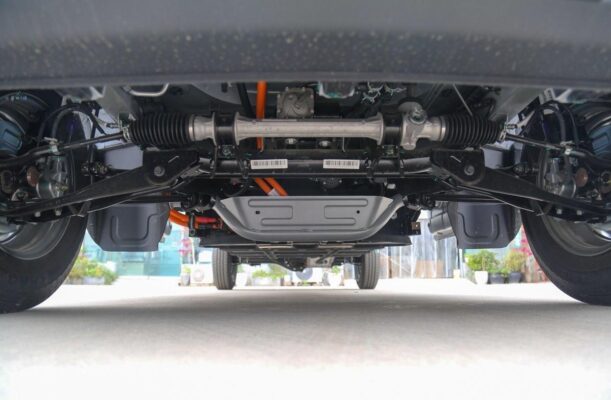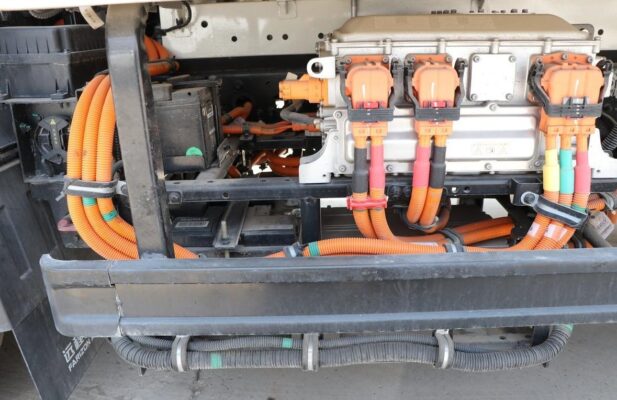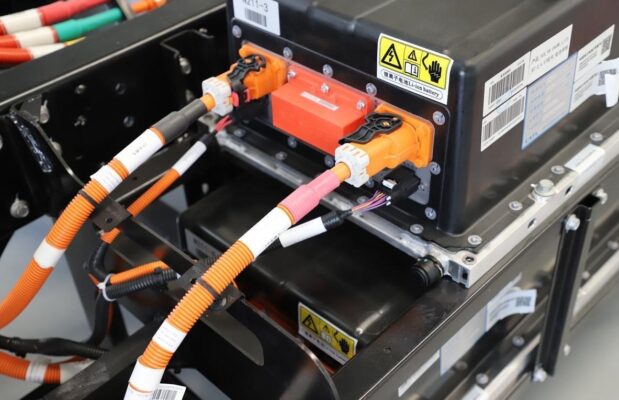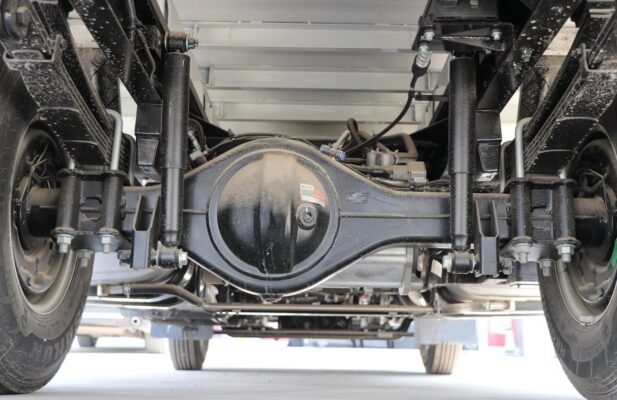Elektrinių sunkvežimių žinios
How to Repair a Lithium Battery with Voltage but No Current?
Paskelbta iki Elektriniai sunkvežimiai
When we encounter a lithium battery that shows voltage but no current, it’s a situation that requires a detailed understanding of the battery’s internal workings and possible issues. To the layperson, it might seem like the battery has voltage but no current, but in essence, this indicates that the internal resistance of the battery has escalated to a significant degree, nearly reaching an open-circuit state, resulting in a near-zero capacity.

If we consider the battery as a voltage source with an extremely large internal resistance, when a load is applied, the current flowing through is almost negligible. Tačiau, when measured with a voltmeter in the voltage range, the voltmeter itself has a very high internal resistance. Despite the minuscule loop current, it is sufficient to produce a voltage drop, thus showing a voltage reading on the voltmeter.
It’s important to note that all batteries have a defined lifespan. Once a battery reaches the end of its useful life, it becomes irreparable. Just as all living beings eventually die, batteries too have their expiry when they can no longer function effectively. Šiame etape, the internal resistance of the battery becomes extremely high, rendering it without any repair value. The only options left are either recycling or outright disposal.
Pavyzdžiui, ternary lithium batteries typically have a charge-discharge cycle ranging from 500 į 1000 times, while lithium iron phosphate batteries can reach up to 2000 times. Once the battery has reached the specified number of usage cycles, it has effectively reached the end of its service life and holds no repair potential.

Lithium batteries operate based on the repeated movement of lithium ions between the positive and negative electrodes during charging and discharging processes. During charging, lithium ions detach from the positive electrode plate and traverse to the negative electrode through the electrolyte. Conversely, during discharging, the movement is reversed. The magnitude of the current is dependent on the speed at which these lithium ions move.
If the electrolyte leaks or dries up, it’s comparable to a river losing its water, preventing the smooth movement of lithium ions. This leads to a significant reduction in the shuttling speed of lithium ions, causing a substantial decrease in the charge-discharge speed of the lithium battery and resulting in a very small current. Unlike lead-acid batteries, lithium batteries currently do not have the option of adding electrolyte independently.

Over the course of multiple charge-discharge cycles, in the pathways where lithium ions travel, an accumulation of waste residue occurs. This is similar to the clogging that can happen in human blood vessels due to factors like cholesterol as one ages. Such residue build-up slows down the movement of ions, leading to an overall decrease in the battery’s capacity. In the case of power batteries, once the capacity drops to 80% of the rated capacity, they are no longer suitable for continued use.
Tačiau, not all cases of a lithium battery showing voltage but no current are hopeless. Issues related to the peripheral or protection circuits can often be addressed. At the connections of lithium batteries, which are typically made of metals with excellent conductivity, contact with the air or exposure to certain acids and bases during use might lead to corrosion and oxidation, forming white oxides or other substances with poor conductivity. These substances create a significant resistance at the connection points, giving the appearance of having voltage but no current. In such instances, cleaning or replacing these connections or electrodes to reduce the contact resistance can enable the lithium battery to function properly again.

Be to, lithium batteries, due to their relatively lower monomer voltage and current, often require multiple cells to be connected in parallel and series to form a unit. If the capacity of the entire unit diminishes, it could be attributed to a lagging monomer or poor contact resulting from suboptimal soldering during assembly. Identifying and rectifying the issue with the corresponding monomer can resolve the problem.
Unlike lead-acid batteries, lithium batteries are more sensitive and often require protection boards. If the protection board malfunctions, it can wrongly indicate a capacity decline. Replacing the faulty protection board can restore the battery’s normal operation.

There’s also a situation where the battery has been idle for an extended period, causing the voltage to drop so low that the protection board fails to function correctly. In such cases, removing the protection board and charging the battery independently for a while to raise the voltage, followed by reinstalling the protection board, may allow the battery to resume normal operation.
Apibendrinant, when dealing with a lithium battery that presents with voltage but no current, a comprehensive assessment of various factors such as the battery’s lifespan, electrolyte condition, connection integrity, and the status of the protection circuit is necessary. Depending on the specific cause identified, appropriate repair or corrective measures can be taken. Tačiau, it’s crucial to approach battery repair with caution and adhere to safety guidelines to avoid potential hazards.